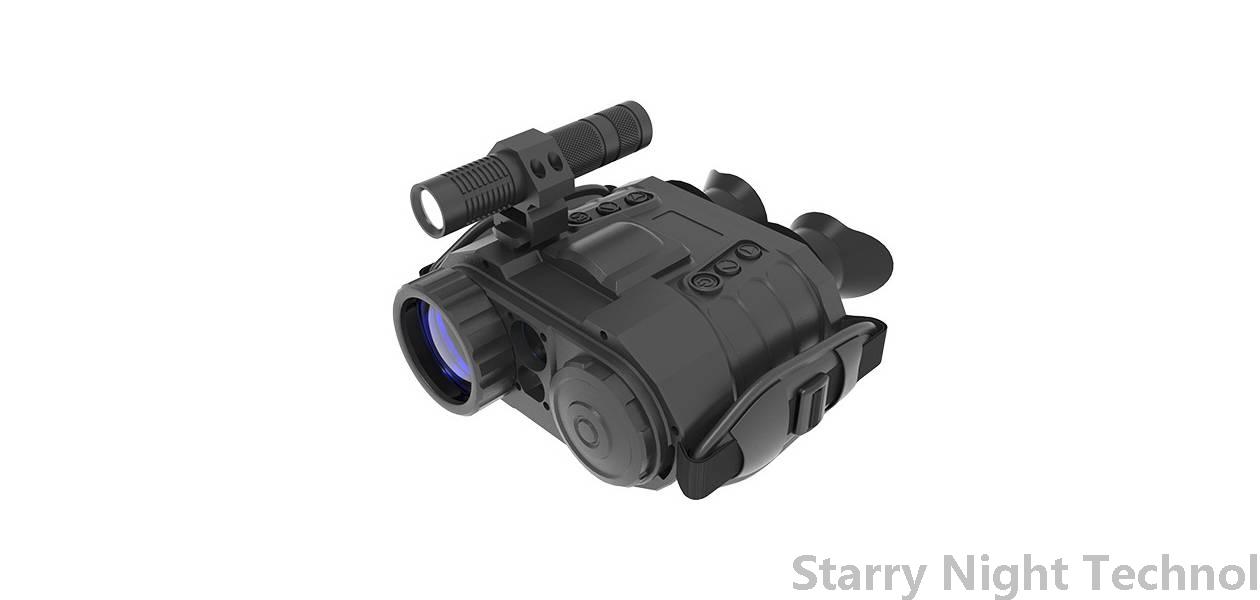Exploring the Various Uses of Night Vision Technology in Surveillance and Reconnaissance
1754877629000

In an era characterized by rapid technological advancements, night vision technology has emerged as a cornerstone for surveillance and reconnaissance. Originally developed for military applications during World War II, night vision devices have seen extensive evolution over the years, finding numerous uses across various sectors including law enforcement, wildlife observation, search and rescue operations, and beyond. This article delves into the multifaceted roles of night vision technology, its operational mechanisms, and its implications for security and surveillance.
#### Understanding Night Vision Technology
Night vision technology primarily operates on two principles: image amplification and thermal imaging. Image intensification systems take advantage of ambient light, such as moonlight or starlight, to create a visible image in dark environments. They employ specialized tubes that amplify the available light many thousands of times. Meanwhile, thermal imaging detects infrared radiation emitted by objects and bodies based on their heat signatures, allowing visualization of warm subjects against cooler backgrounds, which is particularly useful during total darkness.
#### Military Applications
The most recognized application of night vision technology lies within the military sector. Armed forces utilize night vision goggles (NVGs) and scopes extensively to enhance situational awareness during nighttime operations. Soldiers equipped with NVGs can navigate terrain, identify threats, and conduct covert missions without being detected. The advantage of operating under the cover of darkness enables tactical surprise, reduces casualties, and enhances mission success rates.
Furthermore, drones outfitted with night vision sensors play a pivotal role in reconnaissance missions. These unmanned aerial vehicles (UAVs) provide real-time imagery even in near-total darkness, significantly increasing intelligence collection capabilities. Thus, night vision technology offers militaries around the globe enhanced strategic advantages in combat scenarios.
#### Law Enforcement
Law enforcement agencies have also embraced night vision technology to bolster public safety and security. Police departments deploy this technology during patrols, raids, and investigations to detect criminal activity after hours. Night vision devices help officers maintain situational awareness when responding to incidents in low-light conditions, allowing them to identify suspects or gather evidence effectively.
Additionally, SWAT teams commonly use night vision gear during high-stakes operations where maintaining stealth is essential. In hostage situations or armed standoffs, night vision equipment allows operators to surveil the scene without drawing attention, thereby reducing risks to hostages and officers alike.
#### Wildlife Observation and Conservation
Environmental conservation efforts have increasingly leveraged night vision technology as well. Biologists and researchers study nocturnal wildlife behaviors using these tools, gaining insight into animal habits that are otherwise hidden from view during daylight hours. By minimizing human disturbance, night vision cameras allow scientists to observe species in their natural habitat undetected, leading to more accurate data and effective conservation strategies.
 #### Search and Rescue Operations
#### Search and Rescue OperationsIn emergency management, night vision technology plays a crucial role in search and rescue (SAR) operations. Whether it's locating missing persons in treacherous terrains or conducting maritime rescues at night, SAR teams utilize this technology to expand their operational window, ensuring they can act swiftly and efficiently regardless of lighting conditions.
Thermal imaging proves especially beneficial in recognizing heat signatures of individuals trapped under debris or lost in expansive wilderness areas. During critical situations, every moment counts, and night vision technology helps rescuers navigate challenges presented by darkness, amateur navigation methods, and harsh weather conditions.
#### Security and Surveillance Industries
Beyond traditional law enforcement, secure facilities, banks, and corporate campuses increasingly integrate night vision technology into their overall security measures. Surveillance cameras equipped with infrared and thermal capabilities can monitor premises after-hours when unauthorized access often occurs.
This type of surveillance empowers organizations to maintain visual integrity around-the-clock, providing continuous monitoring capacities that deter crime while prompting immediate alerts when security breaches occur. Coupled with advanced AI algorithms, this technology augments the efficacy of security personnel in identifying suspicious behavior patterns predictive of crime.
#### Challenges and Future Trends
Despite its myriad benefits, night vision technology isn't without limitations. High-quality equipment can be expensive, making it less accessible for some smaller organizations or developing nations. Moreover, prolonged exposure to bright lights can damage image intensifier tubes, necessitating careful use protocols.
Looking ahead, ongoing research is targeting improvements in resolution, field of view, and weight reduction of night vision systems, driving greater accessibility and versatility. Innovations include integrating augmented reality (AR) interfaces, enabling users to overlay vital information onto their night vision views, further empowering decision-making processes in critical situations.
#### Conclusion
As we explore the stage set by night vision technology in surveillance and reconnaissance, it becomes evident that its diverse applications stretch far beyond the battlefield. From enhancing public safety through police work to contributing toward ecological preservation, the utility of this groundbreaking technology continues to evolve. Embracing innovative advancements paves the way for broader implementations, ensuring that both security professionals and explorers remain prepared—day or night.
What are some useful night vision devicesStarry Night Technol

